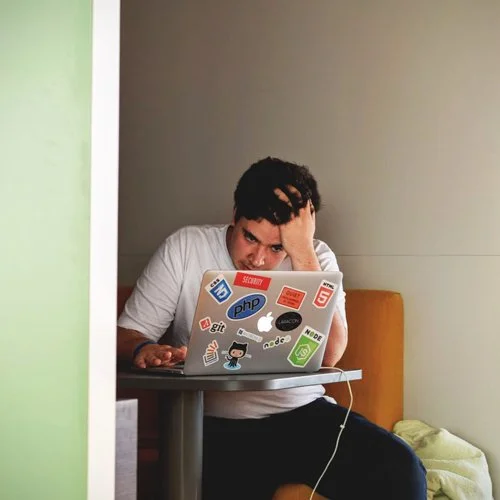Unplug and Socialize During Breaks to Boost Productivity
We’ve all been there: we get to work at 8 a.m. with every intention of getting our laundry-list of tasks done, only to realize at noon that we’ve been reading the comments on Aunt Susie’s controversial Facebook post, sucked into a YouTube hole, or binging on political news every time we take a break from our task at hand.
While checking social media sites can certainly take your mind off the 50 projects on your desk, it’s not nearly as refreshing or relaxing as getting away from the monitor and moving. Breaks are meant for venting, walking, relaxing, and most importantly, communicating.
The Research to Back Break Time
According to a New York Times interview with SocioMetric Solutions CEO, Ben Weber, employees and/or groups of freelancers should take breaks together. This facilitates a natural schedule for communicating and socializing. In fact, when SocioMetric advised a bank to change their break time from individual times to group time, productivity increased by 25%, and employee stress decreased significantly.
However, John P. Trougakos, a management professor at the University of Toronto Scarborough, suggests that some employees may experience more stress if forced to socialize. Instead, voluntary group breaks can help create a better collaborative environment. For example, PopCap Games has break rooms that include sectional couches, video games systems, movies, and a killer kitchen on each floor of the building. Employees have the choice to take their breaks alone or to interact with one another, which ultimately increases productivity at the company.
Sleep's Effect on Productivity
According to a 2013-2014 survey by Gallup, more than half of the participants said they work more than 40 hours each week. However, another study indicated that Americans only get 6.8 hours of shut-eye each night on average, which is less than the recommended amount (8 to 10 hours per night).
This lack of shuteye is getting pricey. In fact, a Harvard study concluded that American companies lose nearly $63.2 billion a year because of decreased productivity due to sleep deprivation. The power of quality sleep is so great that when collegiate basketball players increased their sleep to 10 hours a night, their free throws and three-pointers also increased by an average of 9%.
Extend Your Attention Span
Alejandro Lleras, a University of Illinois psychology professor, debunked a past theory that stated attention was a resource that could be depleted. However, Lleras asserts that, while people are always paying attention to something around them, they may not be focused on the task they’re supposed to be working on. Therefore, a depletion of attention isn’t so much the issue as is the lack of attention on a specific task.
Lleras performed an experiment and concluded that the group that completed a 50-minute task with two brief breaks performed better than three other groups that did not receive brief breaks.
A similar study from the University of Amsterdam concluded that students who performed a task while “highly distracted” were able to give the analytical processing part of their brain a break while performing the task with newfound energy.
Suggestions for Perfect Break Time
According to the Pomodoro Technique, you should work for 25 minutes (one Pomodoro) and then take one short break (usually five minutes). After four Pomodoros, you can take a longer break (usually around 15 minutes).
Walking away from your computer can be the best move you make during your break.
Research by The Atlantic suggests that the perfect recipe for productivity is to work for 52 minutes and break for 17. This assertion is based off an experiment performed by the Draugiem Group. The employees who had the highest productivity levels worked for 52 minutes straight and then took the next 17 to refocus, relax, and regroup.
Julia Gifford, a writer for The Muse who studied the Draugiem results, states that the employees who participated in the experiment did not spend their 17 minutes on a computer, but rather walking, socializing with other employees, or simply reading a book.
Florida State University professor, K. Anders Ericsson studied musicians, athletes, and actors and concluded that taking breaks between 90-minute uninterrupted periods can boost productivity enormously. Ericsson states, “To maximize gains from long-term practice, individuals must avoid exhaustion and must limit practice to an amount from which they can completely recover on a daily or weekly basis.”
According to a study conducted by Baylor University’s Hankamer School of Business, employees who take numerous short breaks throughout the day have more energy while they’re working. While the research doesn’t suggest a positive correlation between taking frequent breaks and an increase in productivity, it does show a correlation between “higher job satisfaction, reduced emotional exhaustion; and greater efforts by employees to undertake work above-and-beyond their job description.”
What to Do on Your Break
Content marketing monster, Neil Patel suggests five main ideas to keep in mind when deciding what to do on your break:
Don’t focus on work
Stay away from the computer or smartphone
Move around
Shift attention away from brain-numbing tasks
Don’t concentrate
So, while you may be tempted to check your Facebook, Instagram, Twitter news feed, the ultimate key to productivity is to simply relax and unplug.
Are you feeling like you need a break from writing your own content? Contact Ethos Copywriting today. We specialize in content marketing, search engine optimization (SEO), social media marketing, and more.




